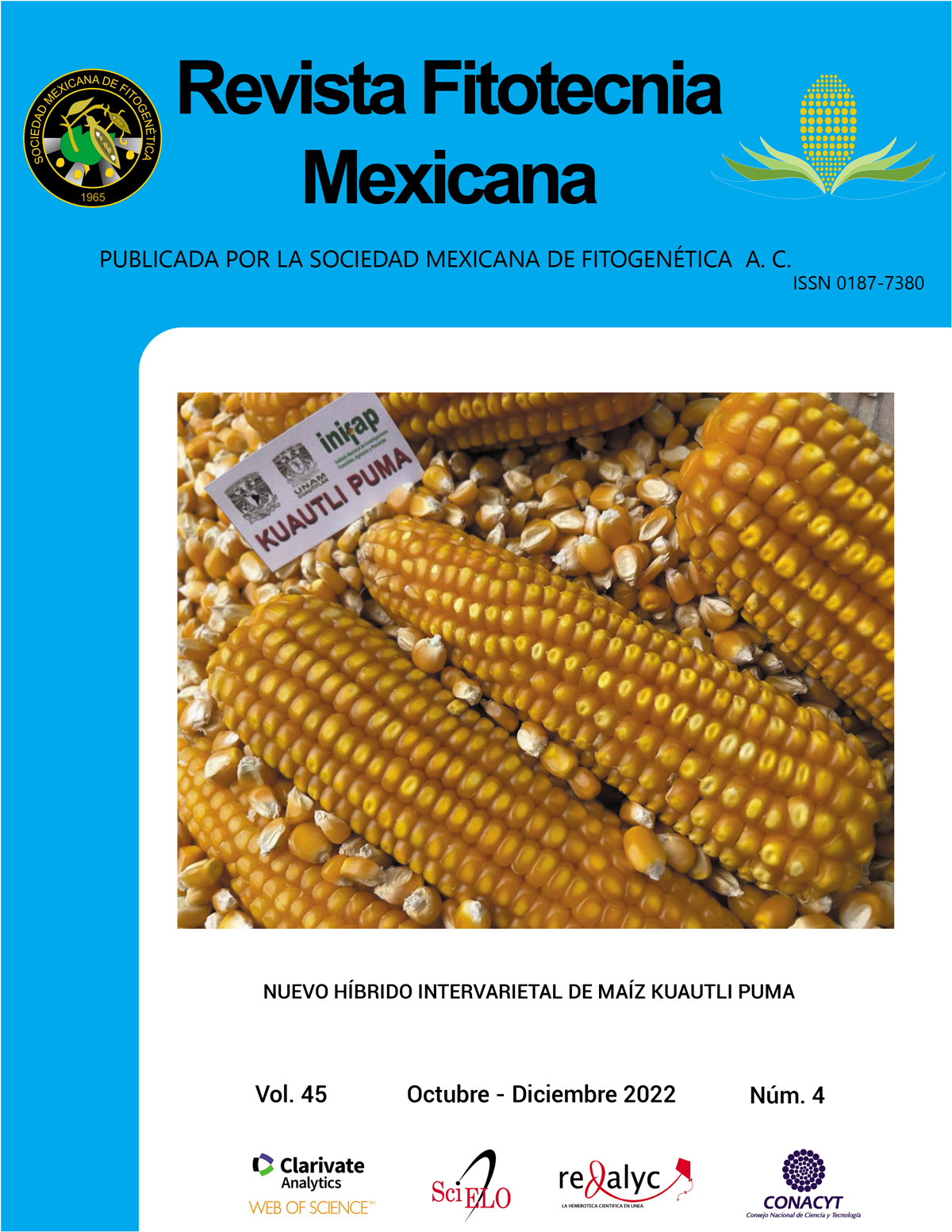TEMPORAL DYNAMICS AND AGGREGATION PATTERNS OF Steneotarsonemus spinki SMILEY IN RICE PLANTATIONS IN MEXICO
Main Article Content
Abstract
Steneotarsonemus spinki is one of the most important pests of rice. In this study, the population dynamics and aggregation patterns of this pest at different plant phenological stages were investigated. Rice plots cv. Milagro Filipino were established in three municipalities of the state of Tabasco, Mexico, and the pest behavior was evaluated from July 2014 to July 2015. The pest was not detected during the crop cycle in the municipality of Comalcalco. In contrast, in the municipalities of Cárdenas and Huimanguillo, the pest was not detected during germination, leaf development and tillering stages. Still, it was seen at the beginning of flowering (97 days after planting). Mite populations reached maximum values of 4319 eggs, 1174 larvae, 1998 inactive larvae, 886 adult males and 1737 adult females per plant in Cárdenas, and 2478 eggs, 794 larvae, 1768 dormant larvae, 333 adult males, and 557 adult females in Huimanguillo. Steneotarsonemus spinki showed cyclical aggregation patterns associated with precipitation dynamics and phenological stages. The wind was identified as a means of dispersal for the mite. No phoretic transport on insects was observed. The presence of the pest was detected at different developmental stages of Echinochloa colona, Leptochloa scabra, Panicum maximum and Cyperus hermaphroditus, both within and outside the studied fields.

